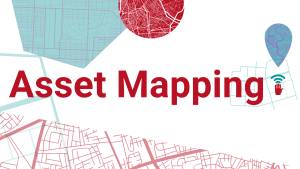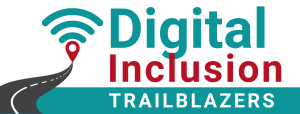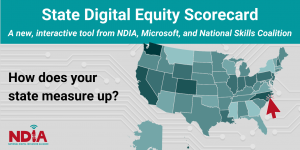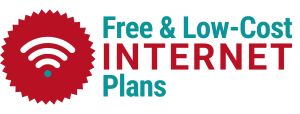Data & Research
NDIA conducts, supports, and promotes data-gathering and research to inform public understanding, policy, and community strategies that advance digital equity.Definitions of Digital Equity and Digital Inclusion
Shortly after NDIA launched, a working group of digital inclusion practitioners discussed (at length) how to define Digital Equity and Digital Inclusion. The definitions were then reviewed, edited and approved by the NDIA community.
NDIA Research and Tools
Using data from the 2019 American Community Survey (ACS) One-Year Estimates, the National Digital Inclusion Alliance releases its annual rankings for America’s Worst Connected Cities. Our analysis this year looked at cities with populations of 65,000 or more to include smaller municipalities along with large and mid-size cities.
Digital Inclusion Trailblazers is the first public inventory of local government initiatives promoting digital literacy and broadband access for underserved residents. Initially launched in 2016 as an advocacy tool for local, state and national digital inclusion leadership. NDIA has revamped the indicators. NDIA maintains an up to date list of local government Digital Inclusion Trailblazers as a handy database of examples for communities interested in taking similar steps themselves.
A tagged collection of reports, studies and journal articles that address the impact of broadband and digital inclusion on community and individual well-being. Searchable by title, keyword, broad category (e.g. “Economy”) or more specific subcategory (e.g. “Migration”), geographic focus, or one of several “digital inclusion tags” (broadband availability, broadband adoption, broadband speed, broadband affordability, digital literacy). Every reference includes a link to the publication itself.
Primary Data Sources
American Community Survey (ACS)
The American Community Survey (ACS) is the US Census’ annual large-scale survey of US households for all kinds of social, demographic, economic, and housing information. The survey includes several questions about digital devices and internet access going back to 2013. It is the most frequently used datasource for residential broadband adoption and device adoption. It also incorporates some high-level information about types of internet service and devices. The ACS data is aggregated for numerous geographic levels ranging from the entire nation and whole states down to Census tracts and block groups.
ACS data is published each year in two primary datasets:
- The ACS 1-Year Estimates, which include only data gathered a given year and report details only for geographic entities with 65,000 or more residents; and
- the ACS 5-Year Estimates, which provide statistically combined data over a five-year period for a much wider range of geographies including Census block groups, tracts, and lower-population towns and counties.
The digital inclusion data in the ACS are reported in the following tables:
ACS Tables Relevant to Digital Inclusion
B28001 Devices
Types of Computers in Household
B28002 Broadband
Presence and Types of Internet Subscriptions in Household
B28003 Devices, Broadband
Presence of a Computer and Type of Internet Subscription in Household
B28004 Broadband, Income
Household Income in the Last 12 Months by Presence and Type of Internet Subscription in Household
B28005 Devices, Broadband, Age
Age by Presence of a Computer and Types of Internet Subscription in Household
B28006 Devices, Broadband, Education
Educational Attainment by Presence of a Computer and Types of Internet Subscription in Household
B28007 Devices, Broadband, Employment
Labor Force Status by Presence of a Computer and Types of Internet Subscription in Household
B28008 Devices, Broadband
Presence of a Computer and Type of Internet Subscription in Household
B28009A-I Devices, Broadband, Race/Ethnicity
Presence of a Computer and Type of Internet Subscription in Household by Race/Ethnicity
B28010 Devices
Computers in Household
B28011 Broadband
Internet Subscriptions in Household
B28012 Devices, Broadband, Age, Education
Age and Enrollment Status by Computer Ownership and Internet Subscription Status
Current Population Survey (CPS): Computer and Internet Use Supplement
The CPS Computer and Internet Use Supplement is a partnership of NTIA, the Bureau of Labor Statistics, and the US Census Bureau to measure household internet and digital device access and usage. It also includes information on where, how, and for what purposes people use the computers and the internet, along with perceptions and concerns related to internet usage. This makes it the only national-scale public dataset with information on people’s online behaviors and attitudes. In the absence of an authoritative source for digital skills data, the user behavior and perception data is used to infer digital skills needs. For example, disparities in the use of the internet for certain purposes (e.g. job searching, accessing health records, or making online purchases), concerns with internet usage (e.g. identity theft or online harassment), and reasons for not having home internet can be used as heuristics for digital skills.
CPS Computer and Internet Use Supplement data is available for every other year between 2013 and 2021. The Census Bureau’s Microdata Access Tool allows you to aggregate data at the state and county level. You can also download the entire dataset, however it requires significant formatting to be usable.
Broadband Data Collection and National Broadband Map
The Federal Communications Commission’s (FCC) National Broadband Map is the definitive source of data on broadband availability in the US States and Territories. The most notable difference between the National Broadband Map and the FCC’s previous method of assessing broadband availability, Form 477, is that the new map’s lowest level of geography is a “broadband serviceable location” (BSL), such as one house or office-building, rather than census blocks. For each BSL, the dataset tracks the Internet Service Provider’s (ISP) name, the type of internet technology, the speed, whether the location is a residence or business, and the number of units if it is a multiple dwelling unit. The FCC first released the National Broadband Map in November 2022 and will update it every six months to reflect feedback and updates from ISPs and community challenges to the map. It is important to note that the National Broadband Map only shows availability, i.e. a location that is able to be serviced, and whether or not it is currently serviced. It does not reflect the quality or affordability of the internet connection.
From the site, you can download data by state or by provider. After selecting a state or provider, you can download data summarizing all types of fixed broadband technologies or mobile broadband technologies, or you can choose one specific type of technology (for instance, “Fiber to the Premises”). The data comes in a CSV format and downloads in a ZIP file. Note that the data download provides a location code and the census block it is in, rather than individual addresses.
Affordable Connectivity Program (ACP), Lifeline, and Other Subsidy Data
Data about participation in broadband subsidy programs are valuable for understanding the extent to which existing broadband affordability resources are being leveraged, and where greater outreach and engagement may be needed. The Universal Service Administrative Company (USAC) administers ACP, Universal Service Fund programs (E-Rate, High-Cost, Lifeline, and Rural Health Care), and Emergency Connectivity Fund (ECF). As part of its administrative role, USAC collects and publishes data about these programs through its Open Data Portal. USAC publishes ACP program data separately on the ACP Enrollment & Claims Tracker.
Data on USAC programs vary in detail, granularity, and update schedule by program. For the two household-level broadband subsidy programs, the following is available:
- Lifeline – County-level subscriber counts by service type and state-level total subscribers vs. eligible households
- ACP – Zip code, county, and state-level enrollment and claims data, with details such as breakdown by verification method, subscription and device claims, and funding awarded.
Dashboards, Tools, and Visualizations
- NTIA Indicators of Broadband Need Map: Interactive mapping tool that compiles several data sources targeted at identifying areas with high digital inequities.
- Microsoft Digital Equity Data Dashboard: Users can select a state or territory, create custom measures of digital equity from more than 20 variables, and visualize the measure across different demographic groups.
- Technology Policy Institute Broadband Map: Supports mapping, time series, and robust statistical analyses of data from a range of sources.
- Purdue Center for Regional Development Data Tools: Several tools for analyzing digital equity and comparing geographies, including a County Connectivity Landscape Dashboard, Digital Distress Measure, and Digital Divide Index.
- The Markup’s Digital Discrimination National Investigation: This story analyzed internet deals from four major ISPs in 38 US cities and found evidence of digital discrimination (written by Aaron Sankin and Leon Yin).
- The Markup’s DIY Internet Disparity Guide: Guide with several tools that can help you investigate internet deals in your local area and analyze them for possible discrimination (written by Aaron Sankin and Leon Yin).
- Pew Internet Research: The longest-running consistent source of rich national survey information on Americans’ attitudes and practices on digital topics, including adoption and use of computing devices and the internet.
- Institute for Local Self Reliance ACP Dashboard: Allows users to see ACP enrollment by state and Congressional district, highest and lowest enrolled cities, and the amount of federal ACP funding left.
- Benton Institute Affordable Connectivity Program Enrollment Performance Tool: This tool classifies zip code areas into five categories based on the difference between actual ACP enrollment and predicted enrollment. High performing zip code areas are those where actual enrollment exceeds predicted levels, while low performing areas have fewer ACP households enrolled than what the tool’s statistical model predicts.
- Digital Progress ACP Map: This map shows ACP enrollment out of the total number of households in each State and Congressional District.
- EducationSuperHighway ACP Enrollment Dashboard: This dashboard shows a map of the United States, comparing eligibility and actual enrollment per state. It also highlights states with a governor who has made ACP a priority






